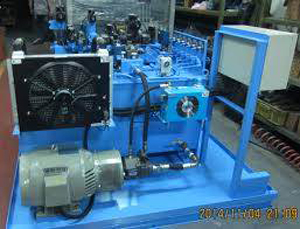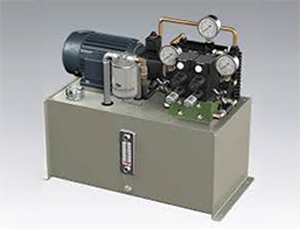Hydraulic System Guide: Functions & Key Components
Hydraulic systems utilize liquid pressure to transmit energy, widely applied in various industrial and engineering fields, such as construction, manufacturing, and machinery. They provide efficient power transmission and are easy to control.
The Main Structure and Components Of Hydraulic Systems
1. Hydraulic Reservoir
The hydraulic reservoir is a container that stores hydraulic fluid. Its main functions include:
- Storing hydraulic oil.
- Allowing the oil to cool and removing impurities.
- Maintaining the stability of the fluid to prevent bubble formation.
2. Hydraulic Pump
The hydraulic pump is the heart of the hydraulic system, responsible for converting mechanical energy into hydraulic energy, providing the necessary pressure and flow for the system. Common types of hydraulic pumps include:
- Gear Pumps: Simple structure, suitable for low-pressure environments.
- Vane Pumps: Higher efficiency, suitable for medium to high-pressure systems.
- Screw Pumps: Used where stable flow is required.
3. Control Valves
Control valves are used to manage the direction, flow, and pressure of the hydraulic fluid. Their main functions include:
- Switching control: Activating or deactivating fluid flow by switching valves.
- Flow regulation: Adjusting flow rates as needed.
- System protection: Preventing overpressure or overflow to protect the hydraulic system's safety.
4. Actuating Components
Actuating components convert hydraulic energy into mechanical energy, primarily including:
- Hydraulic Cylinders: Use the pressure of hydraulic fluid to push a piston, achieving linear motion.
- Hydraulic Motors: Convert hydraulic energy into rotational motion, used for driving machinery.
5. Hoses and Fittings
Hoses and fittings are channels through which hydraulic fluid flows within the system. Their main functions include:
- Transmitting fluid: Connecting various components to ensure smooth fluid flow.
- Pressure endurance: Must have sufficient strength and pressure resistance to prevent leaks or ruptures.
6. Filters
Filters primarily remove impurities and contaminants from hydraulic fluid, protecting other components in the hydraulic system and ensuring proper operation. Regular maintenance, including cleaning and replacing filters, is essential for hydraulic system upkeep.
7. Heat Exchangers
Heat exchangers play a critical role in hydraulic systems, primarily controlling the temperature of the hydraulic fluid to prevent overheating. During operation, friction and pressure can generate heat, and heat exchangers effectively dissipate excess heat into the environment. The main types of heat exchangers include:
- Air-Cooled Heat Exchangers: Use airflow to cool hydraulic oil, commonly used in systems with lower cooling requirements.
- Water-Cooled Heat Exchangers: Utilize water as a cooling medium, suitable for high-load or prolonged operations.
8. Pressure Sensors and Gauges
Pressure sensors and gauges monitor the operational status of the hydraulic system, providing real-time data for operators to make adjustments and control.



Conclusion
Hydraulic systems are composed of multiple components, each serving a specific function. Through the collaborative operation of these components, hydraulic systems efficiently perform various tasks such as mechanical operation, movement, and control. Understanding the characteristics and functions of these components is essential for designing and maintaining hydraulic systems, ensuring safety and efficiency. The role of heat exchangers is particularly significant, helping maintain the optimal operating temperature of hydraulic fluid, thus enhancing system performance and longevity.
Read Other News
-
2025 / 02 / 21



